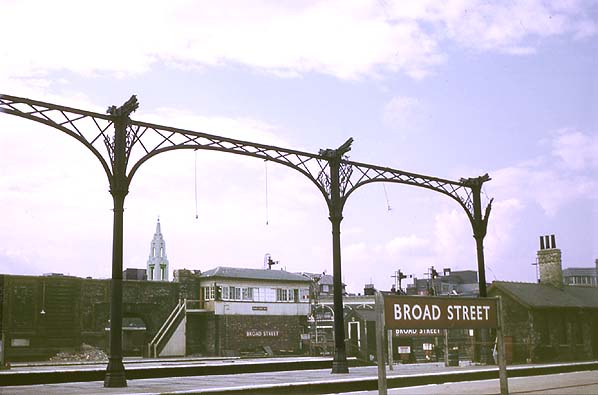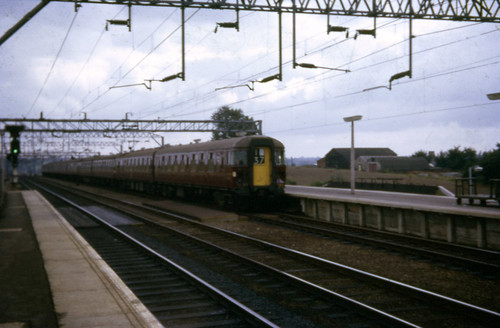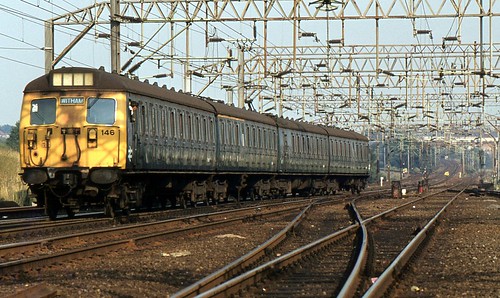When Ernest Marples gave the green light to the electrification of the East Coast Mainline in 1959, he was visibly not a happy man.
The M1 motorway, his pet project, not least due to his own personal interest was running two years behind schedule, and British Railways subsequently found passenger numbers increasing into the 1960s. The East Coast route, unlike the West Coast Route, would be much easier to electrify, with much less overbridges to rebuild and long straight track through the sparsely populated fenland of eastern England, this shouldn’t be a complicated job and most importantly-an expensive one. On a cold day in early January 1960, tree felling had taken place between Oakleigh Park and New Barnet in North London in preparation of construction of the catenary masts to carry the overhead wires.
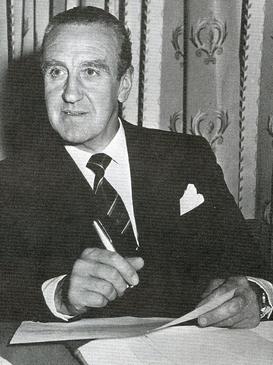
Throughout that year, close work had begun on modernising the old Victorian platforms in North London’s suburban stations and preparing them for the construction of the catenary. Between Hertford, Hatfield and London, dozens of old Victorian canopies were removed and destroyed-to be replaced with modern bus shelter type canopies as seen on the newly electrified East Coast Mainline. However, the North Eastern Region of British Rail had a dilemma on its hands; what would become of the suburban services to Moorgate?
The connection to the Metropolitan Widen Lines, which shared tracks with the Midland Region to Moorgate was accessed by a small bored tunnel, too small to carry electrification cables. Furthermore, the siting of Kings Cross York Road and its sister station on the down line, Kings Cross Suburban were deemed to be too small and remote from the main station to handle the extra traffic from the newly electrified services. Reboring the tunnels were out of the question, as this would impact the cellars of buildings along York Road itself which the line had to descend steeply to avoid. Thus, one option that was briefly looked at was to build a new, bored connection to the Midland connection to the widened lines underneath the station throat at St. Pancras. However, it was chosen to electrify the line from Finsbury Park to Broad Street and close the York Road branch entirely. This would at least breathe some life into the fledging station at Broad Street which was proposed to be built over with an office development similarly to what had occurred at Fenchurch Street.
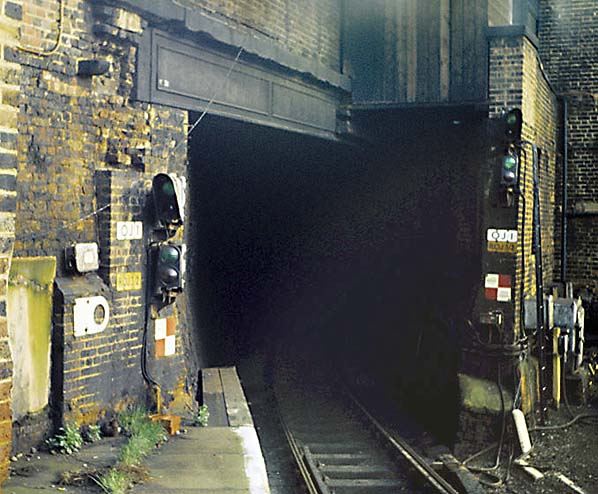
The mouth of the York Road tunnel portal was clearly not large enough to be electrified with overhead wires.
Broad Street station then went under a major reconstruction which included the dismantlement of the Victorian overall roof. Controversially, BR had also planned to knock down the original station buildings, however the City of London Corporation had put up a fierce fight against removing the station frontage, in the fear the same fate would eventually happen to Liverpool Street and Fenchurch Street. The large builds over the station were to be named “North London Place” as a tribute to the station’s original builders-the North London Railway.
Broad Street station-undergoing preperation work for electrifcation.
Much work was taken on the southern end of the East Coast Mainline-track was lowered across its many tunnels, particularly in the Barnet Tunnels to fit in the electric wires and trees and hedges were trimmed back in preparation for the headspan electrification catenary. The tracks through Grantham and Hatfield the August Bank Holiday weekend diverting services via the Hertford Loop to smooth he curves for faster running and a new engine shed was to be opened at York to deal with class 81 stabling.
In preparation for electrification, BR ordered the following rolling stock:
12 Class 81 locomotives designed by Associated Electrical Industries and built by Beyer, Peacock and Company in Gorton, Manchester.
20 four car class 309 EMUs designed for London to Leeds express workings and London to Huntingdon/Peterborough peak workings at York Carriage Works.
27 four car class 305 EMUs designed for Hatfield and Hertford Loop services to Broad Street. Built at York between 1960-62.
It was the class 309s that were of particular attention to the press, as it was the first multiple unit in Britain used for London distance intercity services. The class 309s were already used for the Clacton lines out of Liverpool Street, but this was more of an outer suburban service. The 309/2s from Kings Cross boasted a kitchen and dining car and were to be operated in semi-fixed formations of 8 carriages. BR toyed with the idea of ordering six car units, but held back on the premise that a 12 car train would be too long to for access to Broad Street.



